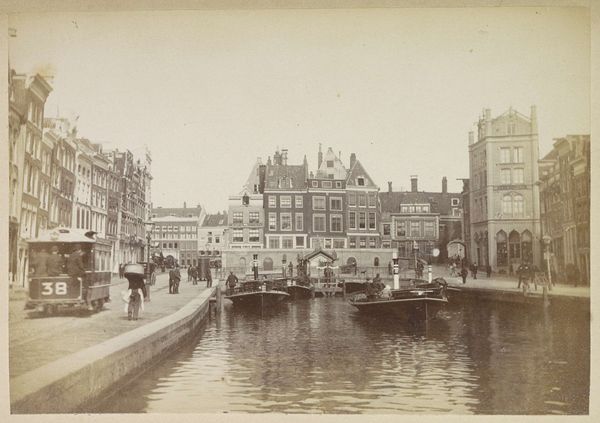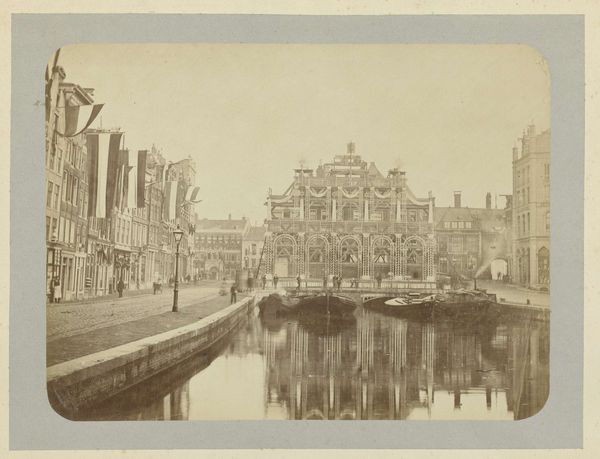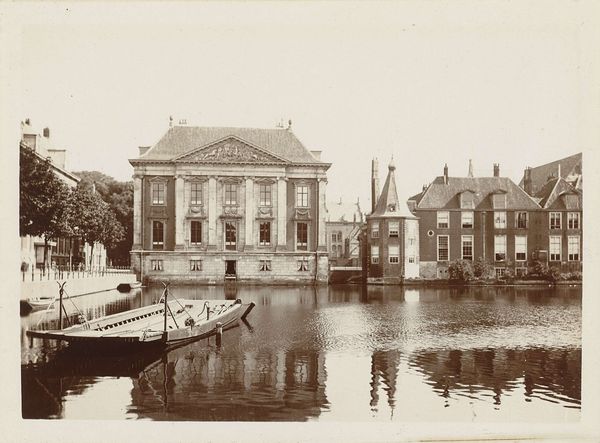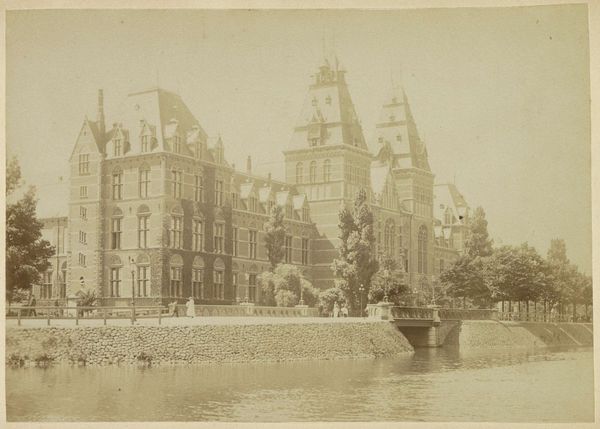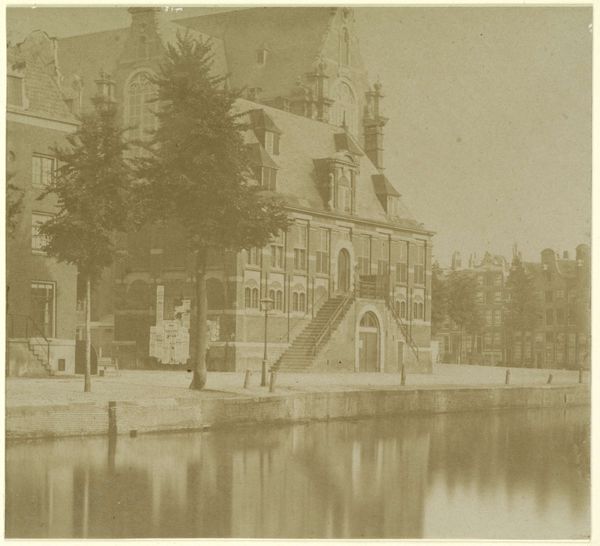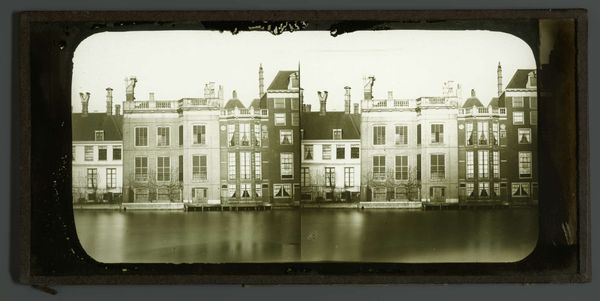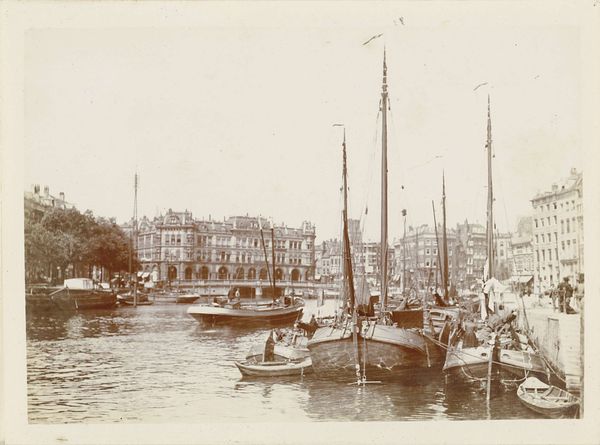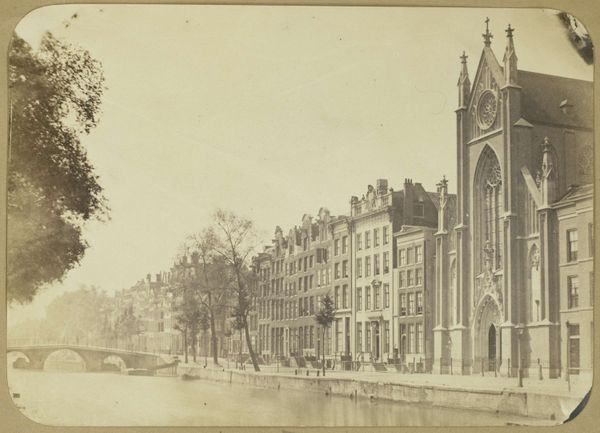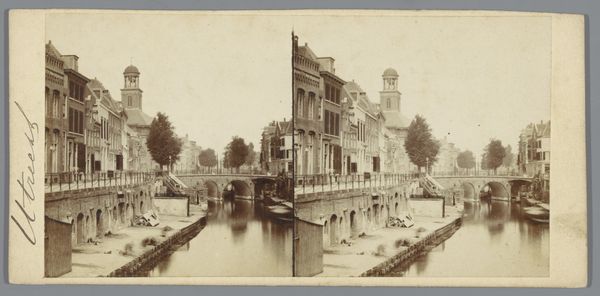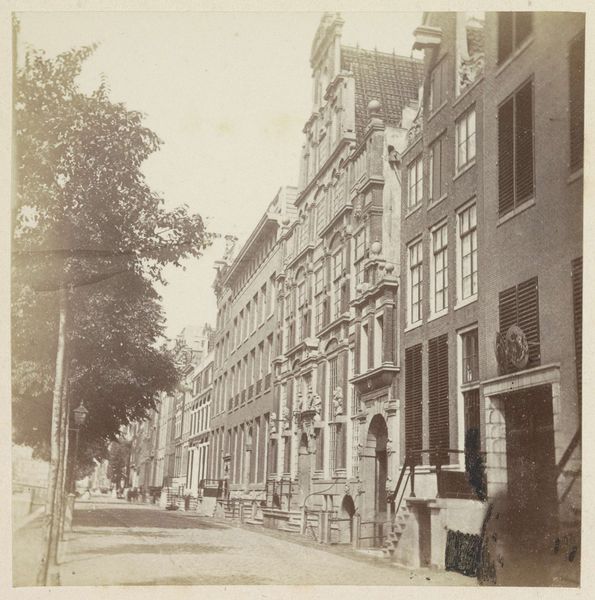
photography, gelatin-silver-print
#
outdoor environmental image
#
photo restoration
#
landscape
#
outdoor photograph
#
outdoor photo
#
archive photography
#
outdoor photography
#
photography
#
historical photography
#
couple photography
#
gelatin-silver-print
#
monochrome photography
#
hudson-river-school
#
outdoor activity
#
cityscape
Dimensions: height 281 mm, width 375 mm
Copyright: Rijks Museum: Open Domain
Curator: Standing before us is Benjamin Brecknell Turner's "View of Keizersgracht," possibly from 1857. It’s a gelatin-silver print, part of the Rijksmuseum's collection. What’s your first take? Editor: It's incredibly still. The water is so calm it nearly mirrors the buildings above. A certain weightiness to the whole scene. The sky, rather blank. Curator: That stillness, I think, speaks to the societal context. Think about the rising merchant class of the time and their desire for stability. The canal itself was a conduit for commerce and communication, key aspects of this era's capitalist development. These homes aren't just dwellings; they are symbols of power and wealth, tightly bound with mercantile activity. Editor: And we see evidence of that production right here, in the textures of the buildings and in the very technique. Early photography, especially gelatin-silver prints like this, required painstaking work. Think of the labor and materials involved in just creating a single image – the glass plates, the silver halides, the darkroom processes. The buildings themselves, likely brick, built by manual labor, funded through trade along these very canals. Curator: Precisely! The composition echoes a distinctly masculine vision – regimented, linear, even severe in its ordering. Look how the rigid architectural lines emphasize social order and control over nature. Consider the implications of who could afford to live along this canal – it reflects hierarchies based on capital and, invariably, patriarchal structures governing access to it. Editor: I’m curious about the choice to use gelatin silver. Compared to earlier photographic processes like daguerreotypes, it allowed for more reproducible images, speaking to the developing media landscape of the mid-19th century and creating a new relationship with material and accessibility. Was Turner concerned about distribution and readership? Curator: Perhaps. I think Turner captured this urban scene to create a sense of continuity, but this is where context is vital. Even though photography seems to depict reality, choices were made. He frames the subject in ways that implicitly reinforce dominant social norms. Think of visibility, whose lives are valued, and whose remain obscured along that distant canal. Editor: Yes, I wonder too, how such clarity changed what society thought a piece of art could achieve with different medium or practice. In the making of a photo, with new advancements and mass appeal in the nineteenth century, a shift occurs in culture as well. Curator: So, in the end, viewing Turner's image prompts a critical re-evaluation of 19th-century bourgeois society's values, power structures, and biases. Editor: It leaves us, as well, to ponder material history. Labor. Production. Dissemination. All right here in one photograph.
Comments
rijksmuseum about 2 years ago
⋮
In the spring of 1857 Amsterdammers witnessed a comical scene near the canal. While taking pictures the British photographer Brecknell Turner fell – equipment, camera and all – from the quay into the water! He nevertheless managed to take a series of superb views of Amsterdam on paper negatives. These prints were available from Kirberger, a bookseller, and were displayed at the 1858 international photography exhibition in Amsterdam.
Join the conversation
Join millions of artists and users on Artera today and experience the ultimate creative platform.

